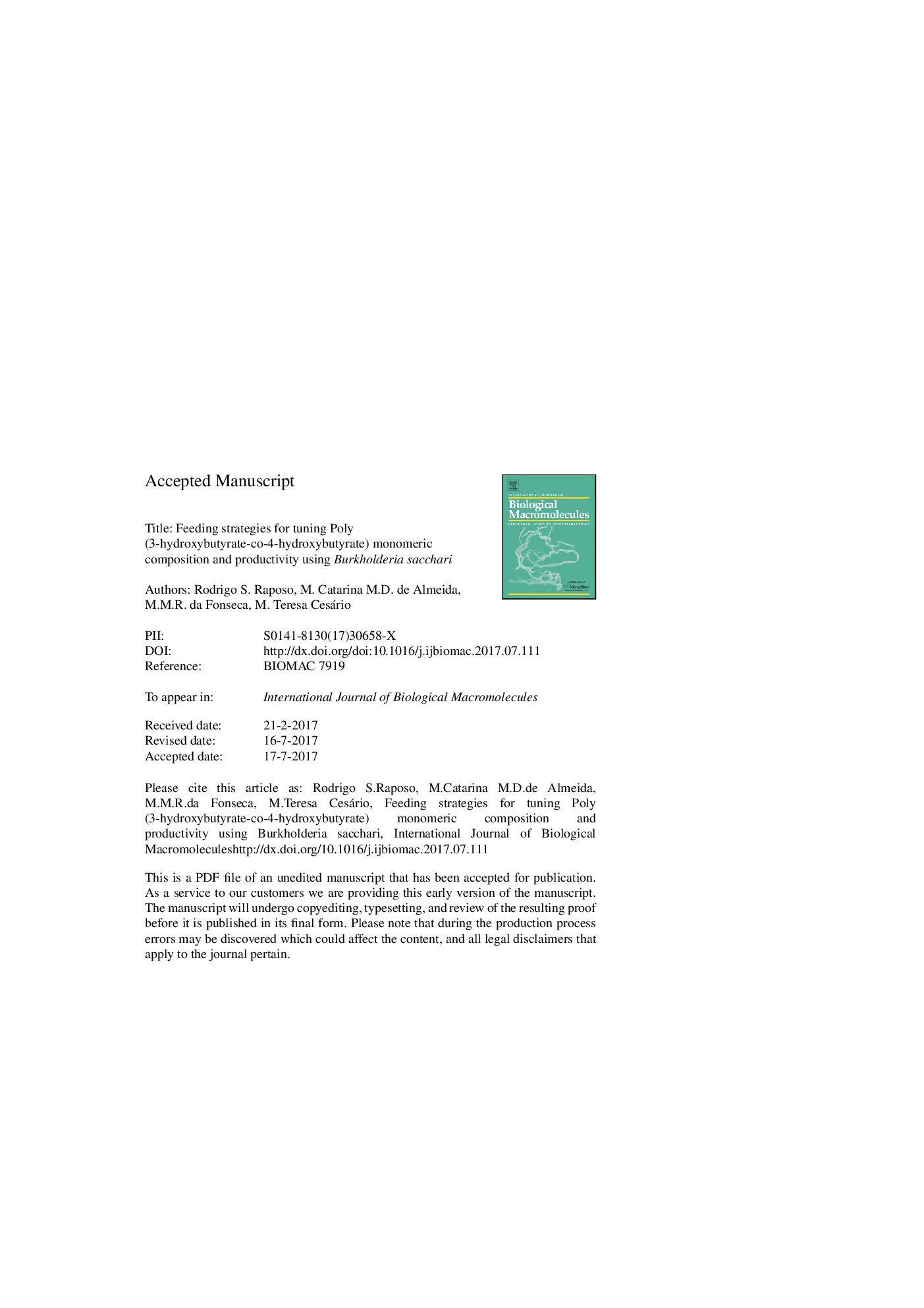| Article ID | Journal | Published Year | Pages | File Type |
|---|---|---|---|---|
| 8329636 | International Journal of Biological Macromolecules | 2017 | 27 Pages |
Abstract
Poly(3-hydroxybutyrate-co-4-hydroxybutyrate) (P(3HB-4HB)) co-polymers were produced at bench-scale in fed-batch cultivations by Burkholderia sacchari from glucose (main carbon-source) and gamma-butyrolactone (GBL) as co-substrate. As P(3HB-4HB) properties highly depend on the 4-hydroxybutyrate (4HB) molar fraction, it is advantageous to have a thorough knowledge of the process in order to promote the production of the targeted final product. In this work, polymers with a 4HB molar percentage ranging from 1.5 to 8.4% (mol/mol) were obtained as consequence of a fine tuning of the fed-batch operation conditions, namely regarding the co-substrate feeding rate and its addition time, as GBL is toxic to B. sacchari cells. The best results regarding both the 4HB incorporation (molar%) and the co-polymer productivity (7.1% and 1.1Â g/(L.h) respectively) were reached when a pulse of GBL (<10Â g/L) was added early in the accumulation phase followed by a constant GBL addition at a rate similar to that of consumption so that a steady co-substrate concentration in the medium was maintained.
Related Topics
Life Sciences
Biochemistry, Genetics and Molecular Biology
Biochemistry
Authors
Rodrigo S. Raposo, M. Catarina M.D. de Almeida, M.M.R. da Fonseca, M. Teresa Cesário,
